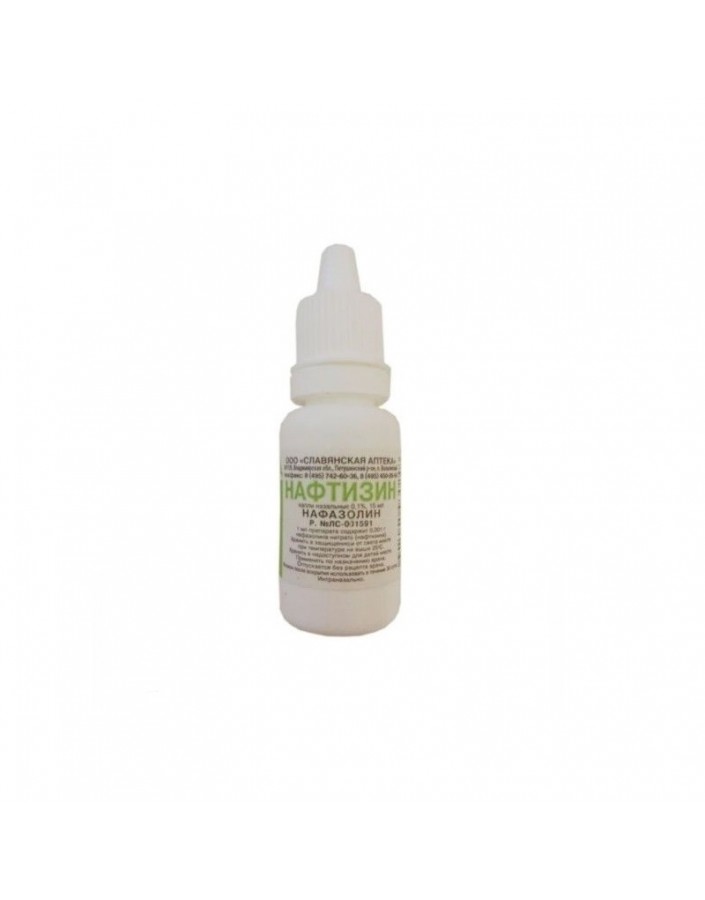




Security policy (edit with Customer reassurance module)

Delivery policy (edit with Customer reassurance module)

Return policy (edit with Customer reassurance module)
Nasal drops of 0.05 and 0.1%: 1 ml of solution contain naphazoline nitrate 0.5 or 1 mg;
in glass or plastic bottles of 10 or 15 ml, in cardboard packs 1 bottle.
Naftizin has alpha-adrenomimetic, anti-inflammatory (anti-edematous) effect.
Acute rhinitis, hay fever, sinusitis, nosebleeds, allergic conjunctivitis; during rhinoscopy and other surgical and diagnostic procedures in traumatology and surgery in order to reduce puffiness and bleeding.
Arterial hypertension, marked atherosclerosis, hyperthyroidism, tachycardia.
Intranasal for adults - in each nasal passage 1-2 drops 2-3 times a day,
children over 1 year old - 1-2 drops of a 0.05 or 0.025% solution.
For nosebleeds, swabs moistened with a 0.05% solution are used.
When conjunctivitis is injected into the conjunctival sac 1-2 drops of a 0.05% solution.
For prolongation of surface anesthesia - 2-4 drops of a 0.1% solution is added to 1 ml of anesthetic solution.
Tachycardia, headache, burning or dryness in the nose.
Slows down absorption of local anesthetics.
If naphthyzine is used for a long time, then it should be borne in mind that its vasoconstrictive effect gradually decreases (the phenomenon of tachyphylaxis), therefore it is recommended that after 5-7 days of use take a break for several days.
Naphthyzine, as well as other vasoconstrictor drugs, is not recommended for chronic rhinitis.
List B. In the dark spot
Naphthyzinum
